|
Change
at Hexcel: |
In responding to global change, Hexcel is focusing primarily on improving the balance in its sources of revenue and on operational effectiveness through cost reduction and productivity improvement throughout the organization. The ultimate objective is to understand our customers’ expectations thoroughly, then deliver on those expectations, on time, every time. Here are some of the major change initiatives now underway throughout the company:
|
Better
Balance
|
Broadening our business base
Diversification beyond commercial aerospace is important to Hexcel’s future. And the company is taking the lead in efforts to identify new applications for new materials and more cost effective processes in the field of advanced structural materials. In this way, Hexcel can diversify the sources of its revenue and broaden its business base.
These initiatives are both internal and external. The creation of Hexcel Ventures in late 1997 brought together internal research and technology, engineering, manufacturing and marketing resources in order to pursue selected potential diversification opportunities.
Hexcel’s diversification initiatives also involve acquisitions, alliances and other collaborative relationships with industry leaders in growth markets. For example, in the spring of 1998, Hexcel established a global strategic alliance with Sika Finanz AG, a worldwide leader in construction chemicals and structural adhesives, to develop and market composite systems to the construction industry.
The largest diversification step taken by Hexcel during 1998 was the company’s acquisition of the business of Clark-Schwebel, Inc., and the subsequent integration of Clark-Schwebel with Hexcel’s existing structural fabrics operations.
This acquisition, announced in July and completed in September, is strategically important for Hexcel for three primary reasons:
- It further diversifies Hexcel beyond commercial aerospace. As a direct result of the acquisition, on a pro forma basis, Hexcel’s fiberglass electronic materials sales increase to 15 percent of sales, from five percent, and commercial aerospace sales are reduced to 57 percent from 66 percent.
|
Creating
a Better Balance for Hexcel
|
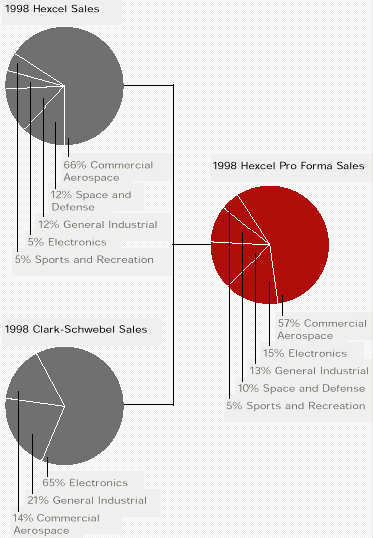 |
| Excludes Clark-Schwebel’s JVs |
|
Five key change initiatives focus on balance and customer satisfaction |
- It globalizes an existing European growth platform in structural fabrics by adding a strong US presence and (through joint ventures) broad global positioning and capacity.
- It establishes Hexcel as the global leader in supplying fiberglass materials to customers in the electronics and telecommunications industries.
Prior to its acquisition
by Hexcel, Clark-Schwebel was already the US leader in the production
of electronic fiberglass materials used in the manufacture of printed
circuit boards. These boards are an integral part of computers, cellular
telephones, automobiles and literally thousands of other electronic devices. In addition, Clark-Schwebel had
been producing a wide range of structural fabrics for use in reinforced
composite materials, ballistic protection, recreational products, building
materials and other applications that demand the strength and high-performance
capabilities of fiberglass and other specialty fibers. These products
expand Hexcel’s presence in each of these markets.
thousands of other electronic devices. In addition, Clark-Schwebel had
been producing a wide range of structural fabrics for use in reinforced
composite materials, ballistic protection, recreational products, building
materials and other applications that demand the strength and high-performance
capabilities of fiberglass and other specialty fibers. These products
expand Hexcel’s presence in each of these markets.
Hexcel Schwebel operates state-of-the-art manufacturing facilities both in the US (Georgia, North Carolina, South Carolina and Texas) and in France (Décines and Les Avenières). In addition, Hexcel Schwebel’s global leadership is strengthened by significant ownership positions in three joint ventures owned by Clark-Schwebel prior to the acquisition. These three joint ventures, located in Asia, Europe and the US, have annual sales over $300 million.
|
The
Lean Enterprise
|
Operational excellence creates customer value
The keystone of Hexcel’s initiatives to improve operational effectiveness is the Lean Enterprise initiative. This program, which was introduced in 1998 in most US locations, is based on the methodology used in the Toyota production system. It encompasses the relentless pursuit of operational excellence through the elimination of every type of waste and activities which do not add value for customers.
By implementing the principles of the Lean Enterprise, Hexcel is reducing costs throughout our operations and working with our customers to reduce their costs, as well.
The Lean Enterprise
is the guiding principle for the way everything should be done at 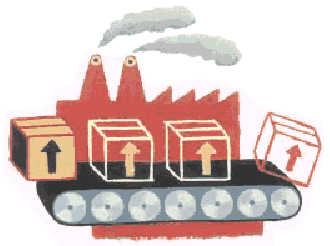 Hexcel.
It means using less of everything, while still achieving world class levels
of product quality and safety. The company’s Lean Enterprise initiative
being integrated and linked with our overall quality management efforts,
which in turn directly connected to customer satisfaction levels.
Hexcel.
It means using less of everything, while still achieving world class levels
of product quality and safety. The company’s Lean Enterprise initiative
being integrated and linked with our overall quality management efforts,
which in turn directly connected to customer satisfaction levels.
The Lean Enterprise is relevant to Hexcel’s entire vertically integrated value chain, including manufacturing facilities, support functions, product development and interactions with suppliers and customers. The current focus is on streamlining that value chain throughout the company and delivering products to customers faster, more efficiently and more economically. Emphasis is placed on achieving continuous improvement through measured performance and benchmarking.
The results of implementing the Lean Enterprise concept globally will include: reduced product costs, higher throughput, lower inventories, lower overhead, improved process design, more consistent quality and, for employees, more responsibility and accountability.
|
Product
Quality
|
The goal is to deliver quality, on time, every time
Hexcel is focusing on making sure our products are of consistently high quality and are delivered to our customers on time, every time.
|
The keystone of Hexcel’s initiatives to improve operational effectiveness is the Lean Enterprise, which encompasses the relentless pursuit of operational excellence through the elimination of waste and activities which do not add value for customers. |
Hexcel’s quality
management initiatives are aimed, first, at completing the certification
of every company manufacturing facility in terms of a basic benchmark—ISO
9002 registration —by
the end of 1999.
Reaching the standards of this internationally recognized quality management
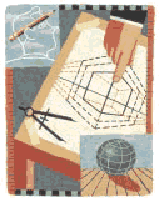 system
is only a beginning, however. Hexcel also is at work to improve production
processes, shorten lead times, enhance product quality and reduce product
costs.
system
is only a beginning, however. Hexcel also is at work to improve production
processes, shorten lead times, enhance product quality and reduce product
costs.
Individual business units and individual facilities will be responsible
for their performance, under the overall umbrella of a new corporate quality
system.
|
Global
Reorganization
|
Changing for a new business environment
Globalization is one essential characteristic of the changing business environment. And Hexcel is changing its organizational structure to improve operational effectiveness and serve our customers better.
The new organizational structure for Hexcel’s global operations is designed to meet the reality of a global customer base, global competitors and the need for more integrated, cost effective strategy and operations.
The most significant organizational changes in 1998 were:
- Establishing a
Global Operations Leadership Team to assume joint accountability for
operational planning, execution and results for the company’s global
operations. This
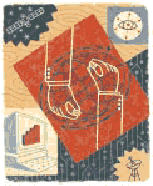 team of experienced senior managers will be responsible for driving
all of Hexcel’s change initiatives through integrated planning and execution.
Decisions will be made from a corporate-wide perspective, linking benefits
across the entire company, not simply in one business unit or another.
team of experienced senior managers will be responsible for driving
all of Hexcel’s change initiatives through integrated planning and execution.
Decisions will be made from a corporate-wide perspective, linking benefits
across the entire company, not simply in one business unit or another.
- Forming a single global business unit for composite materials. This new business unit encompasses what had been separate organizational units in the US, Europe and the Pacific Rim.
- Integrating Hexcel Fabrics and the newly acquired Clark-Schwebel operations into a single global business unit.
|
Cultural
Change
|
Global integration to achieve a truly unified enterprise
Today’s Hexcel is the result of bringing together the pre-1996 Hexcel with four acquired businesses: Ciba Composites (acquired in 1996), the composite products division of Hercules (also 1996), Fiberite’s space satellite unit (1997) and Clark-Schwebel (1998).
In integrating these
new businesses, the company’s goal is to mold a single company, with a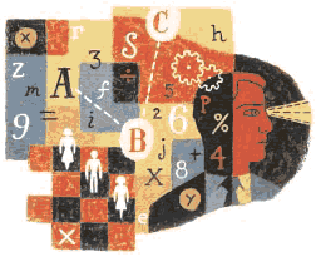 clear vision, an integrated strategy and a unified operating philosophy.
This effort encompasses every aspect of the company’s operations, including
manufacturing, research and technology, engineering, customer service
and all others. At the same time, it is essential to preserve the global
accountability and responsibility of the individual business units.
clear vision, an integrated strategy and a unified operating philosophy.
This effort encompasses every aspect of the company’s operations, including
manufacturing, research and technology, engineering, customer service
and all others. At the same time, it is essential to preserve the global
accountability and responsibility of the individual business units.
Hexcel’s new Global Operations Leadership Team is responsible for leading these efforts. But the team will also enlist the daily efforts of all employees of Hexcel, working to make their own functions better, and to make the whole greater than the sum of its parts.
Why is this important? Our business must be driven by the requirements of our customers. And the key to success in these efforts is a unified global culture, leveraging our technologies and capabilities to deliver the products and services our customers demand, more effectively than our competitors.